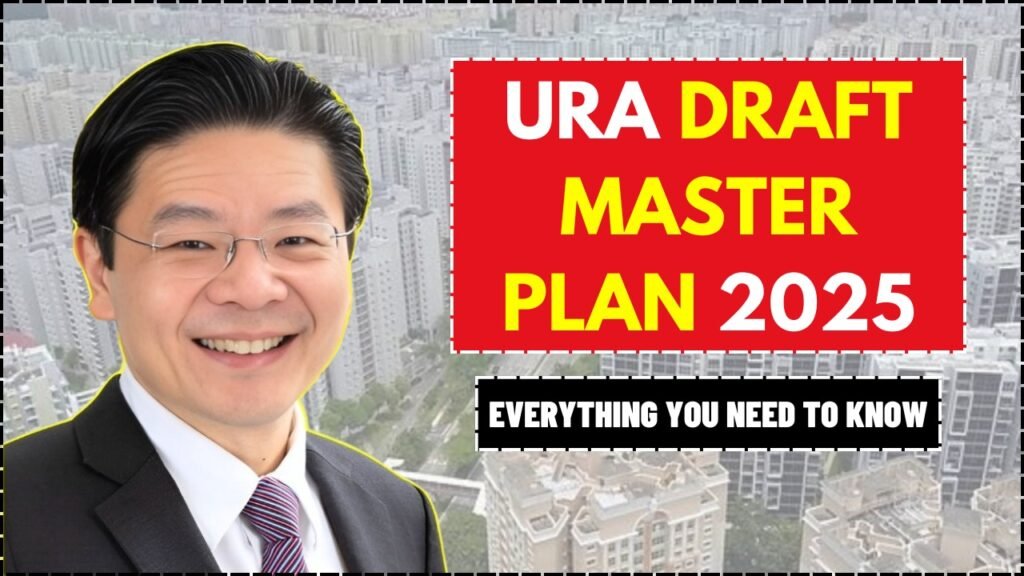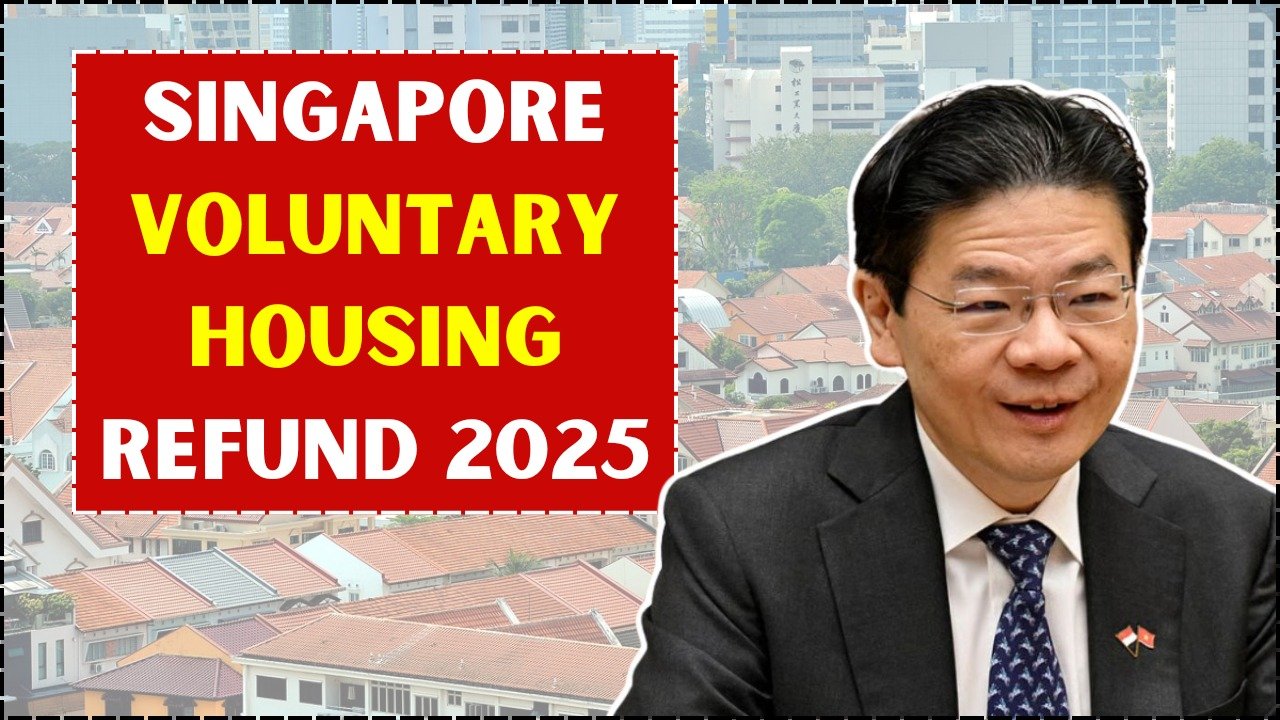
Singapore is on the brink of a major urban renewal that aims to redefine how its citizens live, work, and move through the city in the coming years. With the release of the Draft Master Plan 2025 by the Urban Redevelopment Authority (URA), the nation now has a roadmap that envisions a greener, more connected, and inclusive future. Developed through feedback from nearly 220,000 Singaporeans, this plan seeks to create a harmonious blend of nature, heritage, and modernity.
Focusing on four strategic pillars—well-being, economic vibrancy, environmental resilience, and heritage preservation—the Master Plan outlines what the city-state’s landscape will look like over the next 10 to 15 years. From central housing expansions to new MRT lines, and from senior-friendly neighbourhoods to heritage conservation, the blueprint shows how Singapore is preparing to remain a world-class city that evolves with its people.
Table of Contents
Summary
| Key Area | Highlights |
|---|---|
| Central Housing Development | Newton, Paterson, and Greater one-north to host new mixed-use housing |
| Reuse of Airbases & Shipyards | 80,000+ homes planned in Defu, Kranji, Keppel, and more |
| Ageing in Place | Assisted-living units, care apartments, and wellness hubs |
| Green & Active Lifestyles | 25+ new parks, 50 km park connectors, 1,300 km cycling network |
| Infrastructure Expansion | Tengah & Seletar MRT lines, new pedestrian bridges |
| Commercial Revamp | Business-white zones in Tuas, Jurong, Northern Gateway |
| Environmental Resilience | Long Island, underground storage, smart urban modelling |
| Heritage Conservation | 20+ buildings to be conserved, heritage corridors revitalised |
Expanding Housing in Key Urban Areas
One of the headline features of the Draft Master Plan 2025 is the significant increase in housing options across central parts of Singapore. Locations such as Newton, Paterson, and the Greater one-north region will undergo redevelopment to accommodate new mixed-use communities.
In Newton, an upcoming residential district is being planned near the MRT station, designed to incorporate retail and dining spots alongside modern homes. Paterson will feature a bold project constructed above Orchard MRT station, blending residential, commercial, and office components. Likewise, the Greater one-north area will see homes introduced near Dover Road and Mediapolis, complete with recreational facilities and seamless transport access.
Turning Former Industrial Zones into Vibrant Communities
Singapore’s plan to reuse land previously designated for military or industrial purposes is central to meeting future housing needs. Starting with the transformation of the Paya Lebar Air Base and the Defu industrial zone, these new communities will benefit from cycle paths, offices, and improved connectivity.
Major redevelopment will also occur at the former Singapore Racecourse in Kranji, the Sembawang Shipyard post-2028, and the Greater Southern Waterfront—particularly around Keppel Terminal and Distripark. Together, these sites are expected to contribute over 80,000 new homes, designed for a mix of public and private housing. They’ll also feature community-focused amenities such as transport nodes, schools, and parks.
Central Districts to Host More Homes
Singapore plans to make better use of its central land by developing high-density residential zones in key areas.
- Newton will welcome a new residential area near its MRT, designed with homes, shops, and eateries.
- Paterson is getting a mixed-use development built above Orchard MRT, combining living, shopping, and working in one place.
- In the Greater one-north area, new housing along Dover Road and Mediapolis will offer better connectivity and nearby recreational options.
From Airbases and Shipyards to New Estates
Older industrial and military sites are being redeveloped to tackle land scarcity and housing demand.
In total, more than 80,000 new homes are planned across over 10 housing estates, covering both public and private segments.
Paya Lebar Air Base and the nearby Defu area will see new homes, offices, and parks.
The Sembawang Shipyard (post-2028), the former Singapore Racecourse at Kranji, and the Keppel Distripark at the Greater Southern Waterfront will be converted into liveable neighbourhoods.
Evolving Infrastructure and MRT Connectivity
Infrastructure will play a vital role in realising this urban vision. A new pedestrian bridge will connect Marina Centre to Bay East Garden, improving foot traffic flow between downtown and the East Coast area.
On the mass transit front, two future MRT lines are under review: the Tengah Line and the Seletar Line. These new lines are expected to enhance links between areas like Serangoon North, Sembawang, Woodlands, Whampoa, and the Greater Southern Waterfront. With these additions, Singapore continues its efforts to decentralise access and create equal opportunity for development across regions.
Commercial & Industrial Spaces Get a Fresh Outlook
The economic portion of the Draft Master Plan 2025 outlines the evolution of Singapore’s business districts. Jurong, Tuas, and the Northern Gateway will become “business-white” zones—flexible spaces where commercial, industrial, and innovation-driven enterprises can operate in close proximity.
A major feature will be a multi-modal transit hub near the upcoming Johor Bahru-Singapore Rapid Transit System, integrating rail and bus services for commuters and freight. Additionally, Bishan Town Centre will be redeveloped to include new medical facilities, shopping outlets, and office spaces. This decentralisation strategy could include relocating government offices to better distribute economic opportunities and reduce pressure on the Central Business District.
Climate Resilience and Smarter Urban Planning
Singapore’s foresight in environmental planning is evident in its strategy to tackle rising sea levels and resource limitations. A key initiative is “Long Island”—a land reclamation project aimed at bolstering coastal defences while generating usable land.
The city is also looking underground. At sites like Gali Batu in Woodlands, facilities may be built to store construction materials and utilities, freeing above-ground space for residential or recreational uses. Moreover, local universities are working with government agencies to build data-driven planning tools that can simulate future urban needs, climate patterns, and sustainability goals.
Balancing Growth with Heritage Preservation
While Singapore charges ahead with urban development, the preservation of cultural identity remains a top priority. More than 20 buildings and sites, such as NatSteel Pavilion and Bukit Timah Turf City, have been nominated for conservation.
Additionally, older landmarks like the former Pasir Panjang English School will be integrated into new housing developments. Heritage trails, public art, and pedestrian-friendly zones will be introduced in iconic areas like Katong, Siglap, and Moonstone Lane to highlight the nation’s layered history. These efforts reflect a belief that a forward-looking city should always remain rooted in its past.
A National Vision Built on Inclusion and Innovation
Singapore’s Draft Master Plan 2025 offers more than just urban upgrades—it’s a forward-thinking social contract. It demonstrates a clear commitment to inclusivity, environmental responsibility, economic decentralisation, and heritage respect. With integrated planning, robust feedback, and smart solutions, Singapore is aiming to remain a global leader in sustainable and liveable urban design.
As the draft transitions into actionable projects over the next 15 years, citizens can expect to witness a city that grows not just upward, but forward—with heart, purpose, and resilience.
FAQs
Q1: What is Singapore’s Draft Master Plan 2025?
A = It’s a comprehensive urban planning guide outlining Singapore’s development for the next 10–15 years.
Q2: How many new homes are planned?
A = Over 80,000 new homes are expected across more than 10 major areas.
Q3: Will there be new MRT lines?
A = Yes, the Tengah Line and Seletar Line are under study to improve island-wide connectivity.
Q4: What role does heritage play in the plan?
A = More than 20 historic buildings and districts are set to be conserved and integrated into modern developments.





